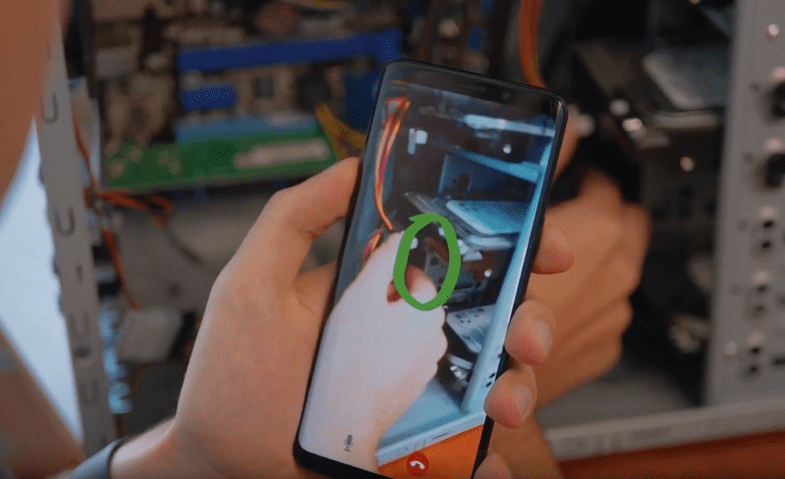AR gives you another tool in your belt when it comes to driving sales and enhancing brand value through mobile devices
Today's markets are driven more and more by the needs and desires of consumers. As technology advances, those desires change and a brand must keep pace with those changes.
Augmented reality (AR) is an emerging trend within marketing and sales strategies, one that allows brands to give their customers unique experiences with the convenience of tapping into their mobile devices.
Mobile has become one of the most significant media types through which consumers interact with brands and make purchase decisions. AR gives you another tool in your belt when it comes to driving sales and enhancing brand value through mobile devices.
1. Let customers try before they buy
Potential customers have always wanted to try products before purchasing them. Fitting rooms, cosmetic samples, automobile test drives, and many other related concepts testify to the effectiveness of this sales strategy. Augmented shopping experiences are one of the rising trends in the retail industry.
Using AR, prospective customers can model and try on makeup, clothing items, and a wide range of home-related products without needing to directly interact with them. AR negates the need for a large physical inventory to allow customers to try on or sample dozens or even hundreds of items in search of the one that best meets their needs.
Download our Business Resource – Marketing technology and media innovation guide
The guide outlines the most important new technologies marketers should consider when planning for future investment in customer-facing marketing experiences and communications to encourage brand engagement and purchase.
Access the Marketing technology and media innovation guide
The applications of augmented reality in this sphere have already begun to multiply as more businesses realize the benefits AR presents. As might be imagined, Facebook has been keen to pioneer AR applications. Its augmented reality offering allows users to digitally sample makeup and accessories, allowing them to model how they look with them before buying anything. The first Facebook AR-related advertisement let potential customers try on virtual sunglasses with the aid of their device's camera.
The cosmetics industry has also been enthusiastic about embracing augmented reality in recent times. Brands like Sephora, L'Oreal, and Perfect Corp have created partnerships to allow their customers to see how the makeup would look on them digitally. Augmented reality is particularly valuable for online sales strategies involving cosmetics, as consumers almost always need to judge a given makeup item by modeling it on themselves.
Another area where AR has the potential to shine is in creating a virtual fitting room or dressing room. When it comes to purchasing clothing, dressing rooms are a necessary evil. Customers are required to lug stacks of clothing items to the dressing room and then employees are constantly needed to restore discarded items. In addition to this, a store is limited by the inventory on hand when it comes to offering clothing for customers to try on.
The augmented reality changing room dispenses with much of that hassle, allowing customers to tap into a digital library of clothing items at the tap of a finger. Brands like Topshop and Timberland have been at the forefront of developing AR fitting and changing rooms to give their customers a virtual experience in helping them select clothing items.
2. Augment touring and assistance
Augmented reality offers the potential for businesses to add a digital component on top of their physical locations and products. Customers can scan a product or object to pull up an AR experience tailored either toward giving additional information about the product or some form of supplemental brand-related experience.
The application of AR in this regard stretches into numerous industries and markets. For example, the ticket-sales company StubHub created an augmented reality app, which allowed users to view a 3D display of the stadium where the Super Bowl was played. Fans were able to visualize the look of the field from various seats to choose the right seat for them.
Starbucks has turned to augmented reality to digitize the experience of touring one of their coffee shops. Users can scan objects within the shop to access a virtual tour, conveying additional information to supplement the physical site.
Within the auto industry, Hyundai and Mercedes have both been adopting AR applications. Hyundai was the first to create an augmented manual for drivers and Mercedes has taken this concept a step further. Mercedes owners can access a feature called 'Ask Mercedes', which pairs an AI assistant with an augmented reality interface to answer a host of potential questions.

3. Augment branding materials
Augmented reality can take branding materials like business cards and brochures to the next level by adding a virtual component. Users can scan printed materials with their mobile devices to access a range of features giving them more information and ways to get in contact with the brand.
For instance, a user can scan a brochure in the right spot to bring up a video highlighting some aspect of the information being conveyed, bringing a dynamic element to the static text on the brochure. Alternatively, a business card can use AR to present a variety of contact options that will allow the user to get in touch with a single click, whether through email, LinkedIn, or by phone call.
AR-enhanced branding materials let their creators inject dynamic virtual elements into the text, heightening engagement.
4. Create a buzz around the brand
Augmented reality can also be used as part of an indirect sales and marketing strategy. While the previous AR applications focused on direct tactics for facilitating sales, AR can also be used to enhance the status of the brand itself.
Creating a novel, unexpected or fun augmented reality experience can result in a significant buzz for a brand if executed properly. AR is a relatively new phenomenon for most people, meaning that a well-designed AR experience will get people talking and generate lasting memories. As people prefer a brand that keeps them happy and satisfied, that kind of exposure and customer goodwill can pay lasting dividends.
A perfect example of using augmented reality to create buzz would be a Pepsi campaign situated at a bus station. Pepsi allowed users to access an AR virtual window alongside the bus station’s wall. Users were treated to the sight of a marauding tiger, UFOs, and robots running loose within the AR vista. By leavening the tedium of waiting for a bus with an augmented reality experience, Pepsi managed to generate discussion and strengthen their brand.
Uber has since followed suit with a similar campaign in Zurich, creating AR experiences for their riders and generating more than one million Youtube views.
By employing strategies like this, companies can generate millions of dollars in earned media. In a competitive market, an augmented reality campaign can be that differentiator that allows a brand to stand out from its peers and create sustained discussion and name recognition.
Digital strategy in a time of crisis
Discover more blogs and ways to kickstart your organization's digital transformation strategy with actionable, practical online learning that gets results, fast!
See More
5. Leverage augmented reality for B2B
Augmented reality stands ready to transform the B2B customer/vendor experienced in several ways. The B2B sales process has always been fraught with the tug-of-war between customer expectations and the limitations of what a vendor is realistically able to provide. AR has the potential to create significant improvements along the entire chain of the sales process.
One of the most significant areas in which AR can improve B2B sales is in creating dynamic sales presentation material. The old model used to arm salespeople with brochures and flyers, and perhaps a PowerPoint presentation. Contrast that with a salesforce equipped with a digital device allowing them to access customized augmented reality applications presenting a virtual 360-degree look at their product lines. It is easy to see which sales team has the upper hand.
AR sales tools can allow customers to see and interact with products in as detailed a way as they desire, from a high-level overview to a granular inspection of individual components. By bringing the product into the meeting room, augmented reality allows customers greater access to the information they need to make a decision.

AR is also a massive boon when it comes to dealing with customization options. As a general rule, customers are looking for as much customization and specifically tailored products and solutions as they can get. Managing those demands from the vendor side isn't always easy.
Augmented reality tools can facilitate customers taking an active part in the design of their products. This input can then be digitally conveyed in real-time to the vendor, providing a smoother chain of feedback leading to customers getting exactly what they want, and vendors being able to provide it for them. AR can create a bridge between customer expectations and vendor fulfillment.
AR offers a similarly outsized impact when it comes to post-sales support. Too often, customers find themselves relying on user manuals or online knowledge repositories, which don't help all that much or are difficult to navigate. This can lead to frustration that results in a customer taking their business elsewhere.

Augmented reality solutions in the customer support arena are only now starting to come to fruition, but the early returns are extremely promising. From AR manuals to the possibility of remote tech support via AR, augmented reality offers the possibility of making customer service more interactive and responsive.
Conclusion
Augmented reality is more than just a novelty or a new frontier in gaming. It stands to be one of the driving forces behind sales and marketing innovations over the next decade. Using AR, forward-looking businesses will be able to upgrade the experience they offer their customers, leading to increased business opportunities and sales.
Andrew Makarov, Head of Mobile Development department at
MobiDev. Andrew is experienced in mobile application development with integration of Augmented reality, The Internet of Things, Data Science, and Machine Learning technologies.











